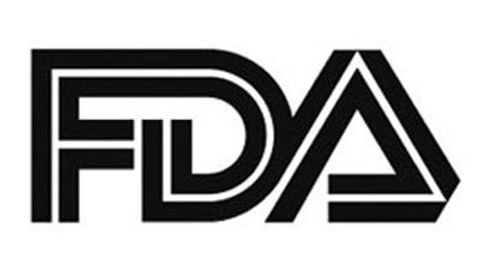FDA Accepts NDA for Momelotinib in Patients With Anemia and Myelofibrosis
Results from MOMENTUM and other phase 3 studies will be reviewed by the FDA as the regulatory body considers approval of momelotinib for patients with myelofibrosis and anemia.

The FDA has accepted a new drug application (NDA) for momelotinib as a treatment option for patients with myelofibrosis and anemia, according to an announcement by GSK plc.1
Results from multiple phase 3 studies support the NDA for momelotinib. One of the trials, MOMENTUM (NCT04173494), met all primary and secondary end points. Primary analysis data from MOMENTUM were presented recently at the 2022 European Hematology Association Hybrid Congress.2
Data showed that the total symptom score (TSS) response rate at week 24 was 24.6% (95% CI, 17.49%-32.94%) with momelotinib compared with 9.2% (95% CI, 3.46%-19.02%) with danazol (P = .0095).2
Momelotinib also demonstrated superiority over danazol in terms of spleen response rate at week 24. Data showed that 40.0% (95% CI, 31.51%-48.95%) of patients treated with momelotinib achieved at least a 25% reduction in spleen volume vs 6.2% (95% CI, 1.70%-15.01%) of the danazol arm (P < .0001). Further, 23.1% (95% CI, 16.14%-31.28%) of the momelotinib-treated patients achieved at least a 35% reduction in spleen volume compared with 3.1% (95% CI, 0.37%-10.68%) of the danazol arm (P = .0006).
Transfusion independence was also demonstrated with momelotinib at week 24. Results specifically showed that 31% of patients in the momelotinib arm achieved transfusion independence at week 24 vs 20% of the danazol arm (P = .0064).
Regarding survival, there was a trend toward overall survival improvement observed with momelotinib vs danazol (HR, 0.734; 95% CI, 0.382-1.409; P = .3510).
The most common any-grade non-hematologic adverse events reported with momelotinib were diarrhea (22.3%), nausea (16.2%), and asthenia (13.1%). In the danazol arm, the most common all-grade non-hematologic toxicities included blood creatinine increase (15.4%), dyspnea (13.8%), and peripheral edema (13.8%).
MOMENTUM is a randomized, double-blind study. The study enrolled patients with symptomatic (TSS ≥10) and anemic (hemoglobin <10 g/dL) myelofibrosis who previously received a JAK inhibitor. A total of 195 patients were randomly assigned 2:1 to receive momelotinib at a daily dose of 200 mg or danazol at a daily dose of 600 mg. The patients were stratified by TTS, palpable spleen length, and number of red blood cell units transfused in the 8 weeks before randomization.
At baseline, characteristics between the momelotinib and danazol arms were well-balanced. Patients were a median age of 71.0 years in the experimental arm and 72.0 years in the control arm. The majority of patients were male, identified as White, had primary myelofibrosis, and had intermediate-2 disease risk. Most patients were positive for a JAK2V617F gene mutation. Finally, most patients had an ECOG performance status of 1.
In the momelotinib arm, 27.7% discontinued treatment. The most common reasons for discontinuation in the momelotinib arm included toxicity (n = 16), patient decision (n = 6) and insufficient efficacy (n = 6). Among patients treated with danazol, 41.5% discontinued treatment. The most common reasons for treatment discontinuation in the danazol arm were toxicity (n = 11), patient decision (n = 5), death (n = 3), and insufficient efficacy (n = 3).
Momelotinib is not currently approved in any market. The FDA has set a Prescription Drug Use Fee Act action date of June 16, 2023, to decide on whether to approve the drug for the treatment of anemic myelofibrosis.1
REFERENCES:
1. US FDA accepts new drug application for GSK’s momelotinib for the treatment of myelofibrosis. New release. GSK. August 17, 2022. Accessed August 17, 2022.
2. Verstovsek S, Vannucchi A, Gerds AT, et al. MOMENTUM: phase 3 randomized study of momelotinib (MMB) versus danazol (DAN) in symptomatic and anemic myelofibrosis (MF) patients previously treated with a JAK inhibitor. Presented at: 2022 EHA Congress; June 9-12, 2022; Vienna, Austria. Abstract S195.